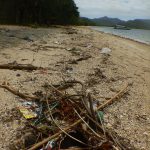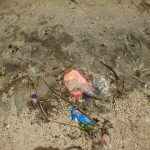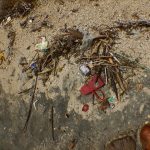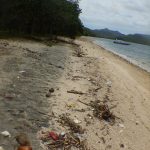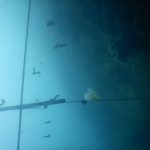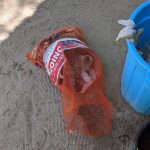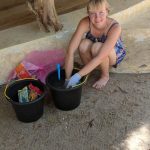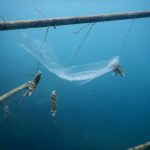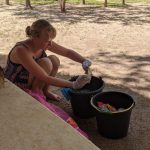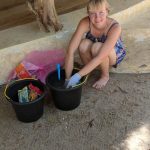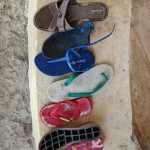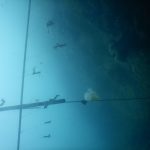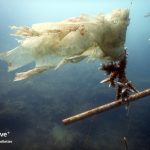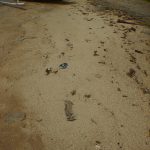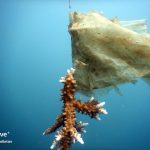Plastic is one of the many environmental issues that is quite evident in the area surrounding SORCE because of the lack of waste management infrastructure. One of our interns Elin Thompson has recently started her project studying macroplastics found on the beach and in the water diving off the beach. Elin has designed her project to compare plastics from the same location, but on and off-shore by doing beach cleans and debris dives. Below follows excerpts from an interview with her to learn a bit more about her project and its motivations.
What is your project?
My project is looking at plastic found in the sea and comparing it to the plastic found on land. I am primarily looking at the types of plastic and the amount found at different sites from above and below the water.
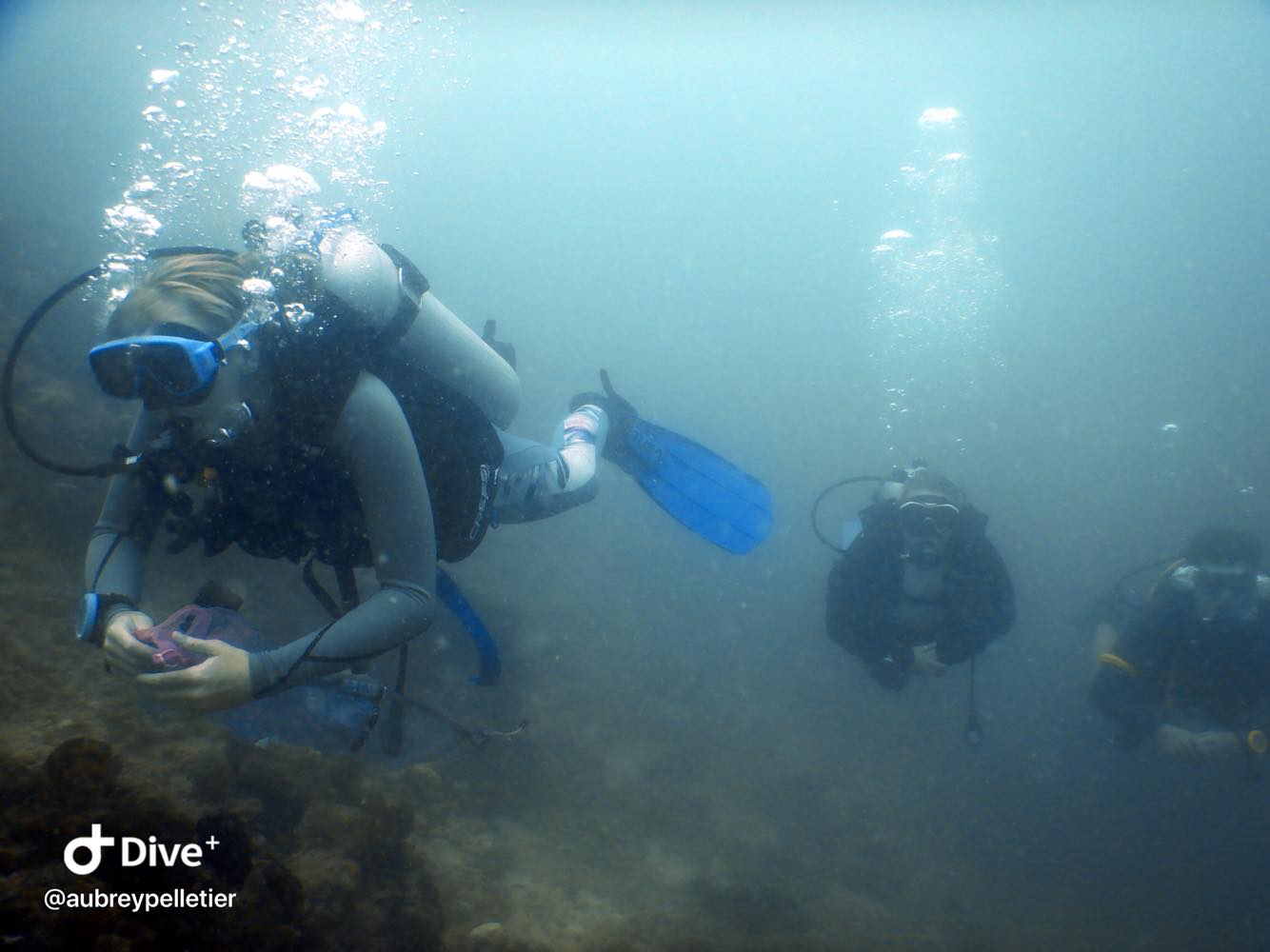
Why plastic?
It’s a hot topic? *laughs* Honestly I don’t know why, but it’s always been what I’ve wanted to focus on. I think a big part of that is because it’s unnatural and harmful to the marine environment and it’s something that is man-made. It’s something that we can stop and think of solutions for and try to reverse.
Why did you choose this as your project?
It’s clear that now there is a lot more rubbish than there was. Certain times of the year bring in more rubbish. Our beach in the last two weeks has been covered in rubbish, which I haven’t seen before [see below]. I’m trying to see why and how it can be prevented from the source by looking at sites which have different factors influencing the plastic I find.
What sorts of factors do you think affect the rubbish you find?
There are so many factors. Underwater currents, surface currents, prevailing winds, rivers, and topography are some of the physical factors. There are also demographic factors such as the number of people living nearby, and the resorts (i.e. tourists).
How would tourists affect what you find?
Because wherever they’re staying would make an effort to clean the beaches and I expect therefore to find less rubbish.
So how are you recording your data? What are you recording?
Each site will have the dive and the beach clean. The litter is then picked up and afterwards categorized into material and tallied by type of litter (ex. bag, shoes, fishing gear, etc.). The litter is cleaned, dried, and weighed so that we can see the weight of each material and also the number of pieces found so that you can compare it to each site and time of year.
How did you choose your locations?
I chose all of the accessible South Gili islands in close proximity to SORCE. At each of the sites the main land section is sandy beach and the ocean sections are the adjacent reef, whether that’s coral or just sand. I can then use the underwater profiles to see if there’s a difference in underwater litter collection.
What do you find the most of?
Bags and packaging, mainly clear bags, food packaging, and cups and straws.
What is the most surprising thing you’ve found so far?
The number of cups, straws, and food packages. The amount of coffee sachets. And in terms of weird items, apart from the umbrella and broom handle, I don’t think anything has been that weird, although there are surprisingly more nappies and sanitary products than I was expecting. Oh! And I found a package for a pregnancy test.
What are the differences you’ve noticed between land and sea?
Smaller fragments and straws found on land. Probably mainly because it’s easier for us to find because it’s not covered in sediment.
What sort of condition do you find the plastic in?
In the ocean, mainly in whole pieces and covered in algae. It’s dirtier. On land you usually find smaller pieces and it’s a lot cleaner and frailer because it’s been sitting in the sun so it breaks down into microplastics more quickly.
What have you noticed about microplastics vs macroplastics?
Well I haven’t really been looking for microplastics because that’s 5mm or less. The only times I find it is when it’s been broken off a bigger piece. So because I haven’t been looking for it, I haven’t seen it. But do you think it’s degrading? Yes, certainly. Especially straws, they easily crumble. It depends on the material, some are quicker to degrade than others.
What do you hope or expect to find?
I expect to find more litter during the wet season and I expect to continue to find lots of food packaging. I hope to find that weirdly, there is more rubbish on land than in the water, and that over time it will decrease even though it probably won’t for the next couple of years in this area. Why do you hope there will be more rubbish on land? There are two reasons. One: it means there’s less in the water. Two: it’s much easier for everybody to collect and see it on land whereas only people who scuba dive can see the destruction underwater, and not everybody can go scuba diving to pick it up.
Do you see lots of rubbish and impacts underwater?
Yes you see lots of rubbish sticking out the sediment and covered in sand which is going to affect anything that burrows in the sand, and then you also see a lot that is wrapped or smothering coral. If it is tangled, or doesn’t move, then that coral is just going to die. I don’t think I’ve seen any fish-plastic interaction, but it probably inevitably happens when we’re not there to see it.
So, what are you hoping to get from this project?
Long term, I hope that the project continues and a couple of years of data can be collected, potentially showing what makes up the majority of the litter. But also I’d want to use results to make the local people more aware and potentially bring in legislation and motivation to not litter and to enforce some sort of waste management scheme. The Indonesian staff, when they see the rubbish, they all say “oh, yeah” – they know what it all is, more than we do. It would be interesting to see if we could suddenly overnight say “everyone in this localized area is going to put their rubbish in the bin and it’s never going to go in the ocean” and see if it did make a difference, or if it’s less localized rubbish that we’re finding. But until that is done, it would be hard to be able to tell. I imagine it would.
What sort of other projects would you hope to see come from this one?
Future projects could look at where the litter is coming from by looking at the manufacturing and the product itself – specifically food products that say where they come from, or expiry dates to see whether or not it’s been in the sea for a long time or not. Really I just want us to get a better understanding of the problems in this area so that we can work to come up with solutions to tackle them with the local communities and provide evidence of the amount litter affecting marine life.
We’re super excited to have Elin and our other interns designing their own projects based on their individual interests. Interns projects will potentially support our work with the government and local communities to make positive changes on Lombok. If you have ideas and want to create a scientific project – be sure to get in touch with us. We would love to cater for thesis’ and dissertation projects. Please send your questions our way via email at enquiries@sorce.org. Hope to hear from you soon 😊 Check out the link to our Facebook and Instagram.
Written by Aubrey Pelletier, pictures taken by Aubrey Pelletier and Elin Thompson.
